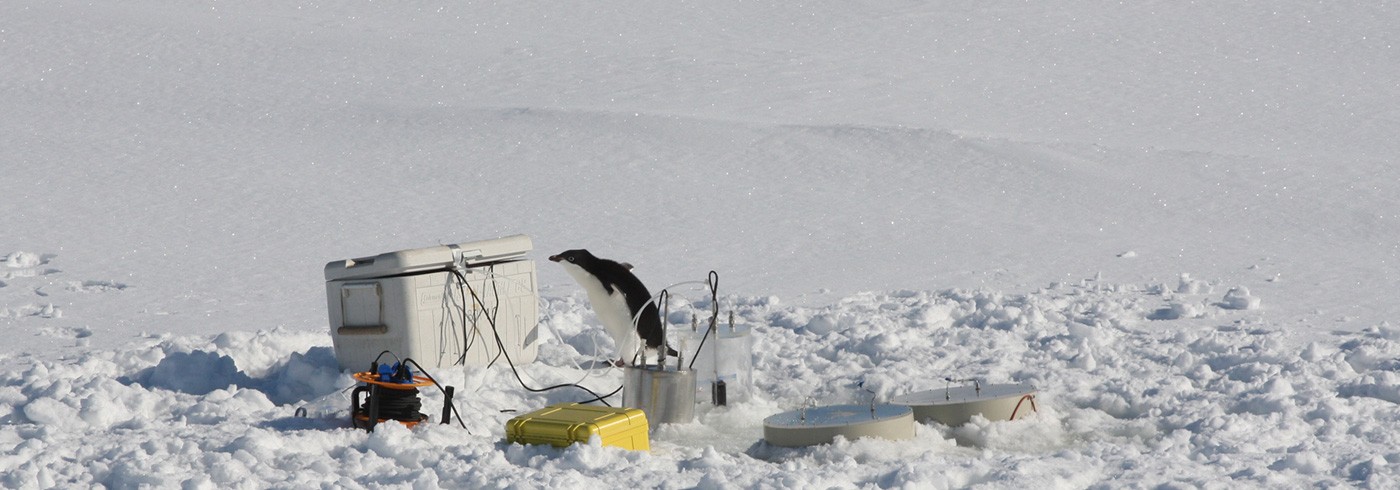Processes driving the CO2 flux in seawater–ice–air and brine
26 November 2008 - 6 January 2009

The sea-ice team using the icecore drill to collect samples of the Antarctic sea ice. Photo: Melissa Chierici
The project aimed to provide an understanding of how different sea ice conditions affect the CO2 system and the vertical transport of carbon due to gas fluxes and brine release from sea ice. We investigated the sea–ice–air CO2 fluxes, the transport of CO2 between sea ice, brine and underlying water, and addressed questions related to the effect of a decreased sea ice cover on the sea–ice–air CO2 fluxes, brine rejection and the effect of carbon transport to the deeper water.
In the Amundsen and Ross Seas, biological production and carbon fluxes are highly dependent on the ice cover, the formation and melting of sea ice, and varying sea-ice types such as first-year ice and multi-year ice. Within the sea ice there is also a unique ecosystem that affects chemical and physical properties, fluxes of gas and particles within the sea ice, and carbon transport to and from the sea ice. Changes in the vertical transport of carbon may be expected due to the increased melting of sea ice.
Samples of sea ice, brine, under-ice water and snow were collected from the Antarctic sea ice and analysed for CO2 system parameters, salinity and temperature. An ice-core drill facilitated collection of sea-ice cores of different characters and thickness. The sea-ice cores were cut into pieces and melted in air-tight bags before analysis. Brine was collected from drilled sackholes, and seawater under the sea ice was samp-led using a sampling device equipped with a pump. CO2 flux chambers and a CO2 gas analyser were employed to estimate the CO2 gas fluxes between sea ice or snow and atmosphere.
Preliminary data on sea-ice AT, pH, salinity and temperature showed variability from the seaice top to bottom in all ice cores. The variation in AT correlated linearly with salinity, except for on a few occasions that may indicate calcium carbonate drainage from the ice. pH varied due to factors such as biological productionand respiration, and CO2 gas fluxes. In the sea-ice top and bottom, pH was lower compared to the centre of the core, indicating higher CO2 content, maybe due to bacterial respiration or gas exchange. In the centre of the ice core, pH was close to 9, which related to very low fCO2 (less than 20 μatm). Research on the various biogeochemical processes in sea ice and brine rejection is being conducted by collaborating Swedish and US teams.

